Summer Student Projects 2010
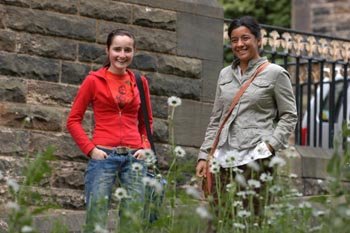 The following list will give some idea of the range and diversity of previous Summer Studentship Scheme projects, along with the named individuals who participated.
The following list will give some idea of the range and diversity of previous Summer Studentship Scheme projects, along with the named individuals who participated.
Measuring Irradiated 3D Detectors
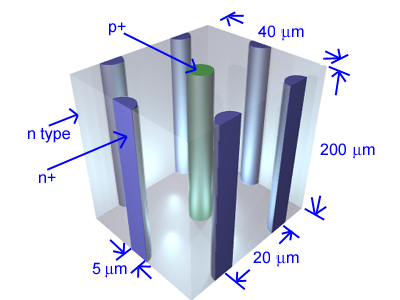 3D detectors are a novel type of particle detector with a significantly improved charge collection after heavy irradiation. They are a potential technology for use in the upgrades of the LHC experiments. The Glasgow group and its collaborators have designed and produced 3D pixel detectors with 55 micron x 55 micron pixels.
3D detectors are a novel type of particle detector with a significantly improved charge collection after heavy irradiation. They are a potential technology for use in the upgrades of the LHC experiments. The Glasgow group and its collaborators have designed and produced 3D pixel detectors with 55 micron x 55 micron pixels.
You will work on laboratory detector testing, software preparation and analysis, and the operation of a testbeam at CERN in August 2010. This will be the first testbeam operation of our irradiated 3D detectors and is expected to lead to a publication.
Supervisor: Dr Chris Parkes
Student: Daniel Hynds
Dates: TBC
Simulation of the performance of the CdTe detector test structures with Synopsis TCAD
The unique combination of high atomic number (good detection efficiency), large band-gap (low dark current) and room temperature operation, makes CdTe an attractive detector for hard X- and gamma-ray applications. Understanding the charge transport process is fundamental to the development of optimised test structures along with different geometrical layouts of the contacts and passivation layers.
The performance of detectors can be simulated using the Synopsis TCAD package available at the department. The prospective candidate will be involved in the simulation of the test structures, and analysis of the output data. This requires good understanding of semiconductor physics and basic programming skill for analysis of simulated data.
Supervisor: Dr Dima Maneuski
Student: Nina Menant
Dates: 28 June - 6 August
Modelling proton-proton collisions at the LHC
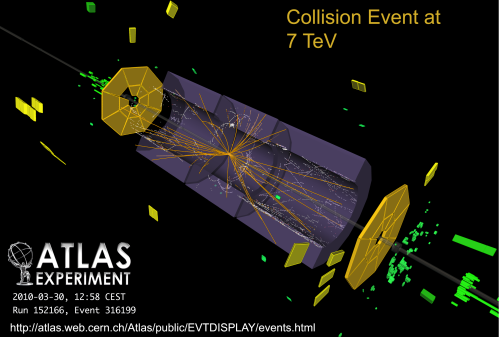 Proton-proton collisions at the LHC are probing an energy regime never before explored in laboratory. This project focuses on the modelling of these collisions, based on recent measurements made by ATLAS, CMS and ALICE. State-of-the-art phenomenological models implemented in MonteCarlo (MC) event generators will be investigated, and their ability to describe the data will be assessed. The student will become familiarised with the data and its meaning as well as with the MC generators. Knowledge of programming languages such as C++ is a highly desirable skill.
Proton-proton collisions at the LHC are probing an energy regime never before explored in laboratory. This project focuses on the modelling of these collisions, based on recent measurements made by ATLAS, CMS and ALICE. State-of-the-art phenomenological models implemented in MonteCarlo (MC) event generators will be investigated, and their ability to describe the data will be assessed. The student will become familiarised with the data and its meaning as well as with the MC generators. Knowledge of programming languages such as C++ is a highly desirable skill.
Supervisor: Dr Arthur Moraes
Student: Mathieu Pellen (Grenoble)
Dates: 31 May - 6 August
Simulation of Neutron Screening for Airborne Cargo
There currently is no clear technique for the detection of threats in air cargo containers. Drugs and explosives may be hidden in containers which cannot be detected using the same techniques employed for the scanning of passengers and baggage. Using specialised neutron sources these containers can be scanned creating gamma rays which are indicative of the elements with which the neutrons interact inside the container. Using gamma-ray imaging and spectroscopy a three-dimensional elemental map of cargo can be built showing the location of threats within the container.
This work would centre on the use of MCNP, a Monte-Carlo particle transport code, to simulate the neutron activation process and to investigate the method by which the gamma ray signatures can be captured to, for threat detection. This would require the student to use CAD (Computer Aided Design) software to build and refine models for simulation with MCNP and the analysis.
Supervisor: Dr Aaron MacRaighne
Student: Kate Doonan
Dates: 14 June - 23 July
K* MuMu analysis at LHCb
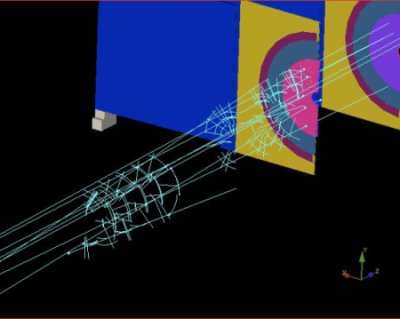 The LHCb experiment at CERN will study CP violation and will search for rare B-meson decays with the ultimate goal of discovering NewPhysics (NP). The LHCb detector has been designed to study the production and decay of particles containing beauty (b) quarks, which are copiously produced at the LHC.
The LHCb experiment at CERN will study CP violation and will search for rare B-meson decays with the ultimate goal of discovering NewPhysics (NP). The LHCb detector has been designed to study the production and decay of particles containing beauty (b) quarks, which are copiously produced at the LHC.
A key new physics sensitive decay channel involves the decay of B mesons to K* mu+ mu-. The decay is sensitive to a wide range of 'beyond the standard model' theories, and can be used to constrain the size of the contributions in the general parametrisation of Wilson co-efficients, and to distinguish between individual models.
Recent theoretical literature has identified a number of new observables that are sensitive to this decay. The student will take an existing analysis and modify this to investigate the potential of these new observables at LHCb.
Supervisors: Dr Tomasz Szumlak, Dr Eduardo Rodrigues
Student: Avril Weir
Dates: 4 July - 13 August
Annealing of heavily irradiated silicon strip detectors for the ATLAS experiment
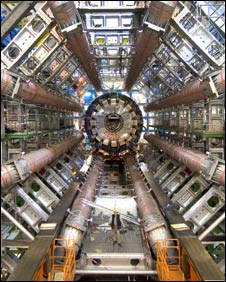 The ATLAS experiment will require an upgrade in the near future, due to the proposed upgrade of the LHC to higher luminosity. This will result in a higher radiation dose experienced by the silicon tracker. As a result, an extensive research programme is being undertaken to examine the performance of silicon detectors after these high radiation fluences. One aspect that needs to be understood is how the detectors behave after being stored at room temperature. The project will measure the electrical and charge characteristics of silicon strip detectors as a function of time at room temperature, and at elevated temperatures, to understand the annealing behaviour of the detectors.
The ATLAS experiment will require an upgrade in the near future, due to the proposed upgrade of the LHC to higher luminosity. This will result in a higher radiation dose experienced by the silicon tracker. As a result, an extensive research programme is being undertaken to examine the performance of silicon detectors after these high radiation fluences. One aspect that needs to be understood is how the detectors behave after being stored at room temperature. The project will measure the electrical and charge characteristics of silicon strip detectors as a function of time at room temperature, and at elevated temperatures, to understand the annealing behaviour of the detectors.
Supervisor: Dr Richard Bates
Student: Benjamin Schaefer
Dates: 26 July - 3 September

